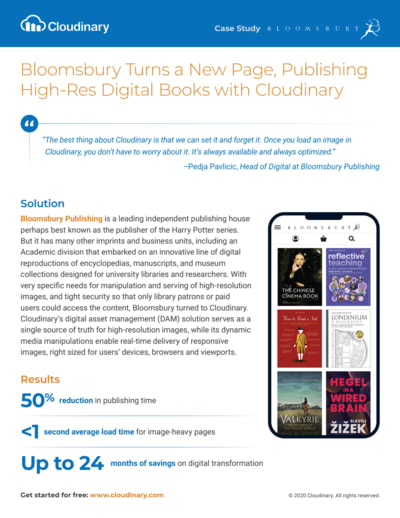Most might know Bloomsbury Publishing as the publisher of the Harry Potter series. What you might not know is that the publishing house also has a vibrant academic division that offers digital reproductions of encyclopedias, manuscripts and museum collections for use by university libraries and researchers. Seeking a way to manipulate and serve high-resolution images, combined with security that prevented anyone other than library patrons and paid users to access the content, Bloomsbury discovered Cloudinary’s digital asset management (DAM) solution.
Using Cloudinary, Bloomsbury quickly turned images of books, manuscripts and museum collections into thumbnails in search results, and merged them into book views. The images were responsive, so they would present quickly and in the right format.
Bloomsbury scanned images once, at 100 megapixels, then stored the single high-resolution version in the secure Cloudinary DAM. Then with Cloudinary's automated image transformation, including format transcoding and quality compression, Bloomsbury was able to set the parameters for how much space an image should take up on the screen, and appropriately wrap the text around it. Cloudinary also supports responsive technology, enabling Bloomsbury to immediately deliver the appropriate image size, resolution and format for each user's browser, device, and viewport.
With Cloudinary Bloomsbury has digitized more than 100,000 documents, totaling more than 300 gigabytes, and responsively serves 7,000 requests and 40,000 transformations a month.
| "The best thing about Cloudinary is that we can set it and forget it," said Pedja Pavlicic, head of Digital at Bloomsbury Publishing, noting that using Cloudinary has cut publishing time in half and improved load times for image-heavy pages. "Once you load an image in Cloudinary, you don't have to worry about it. It's always available and always optimized.” |
Read the full case study here to learn more.






